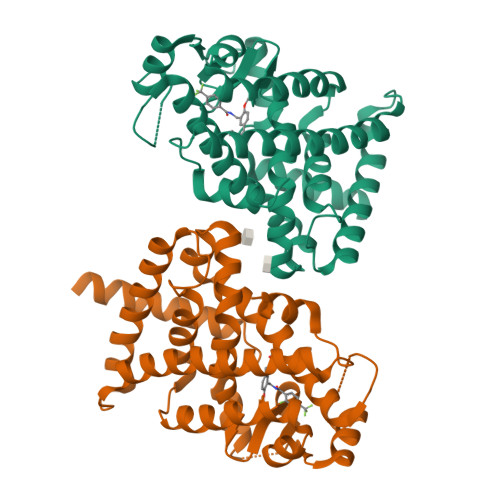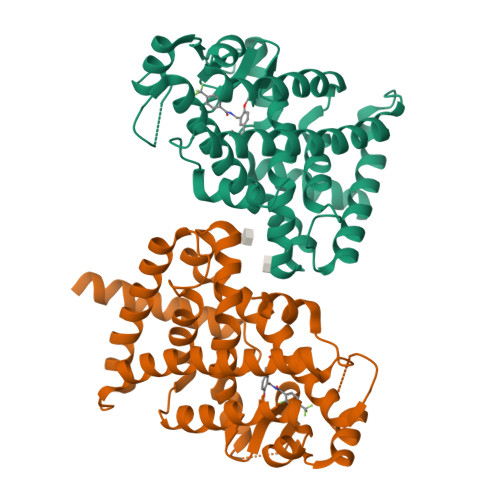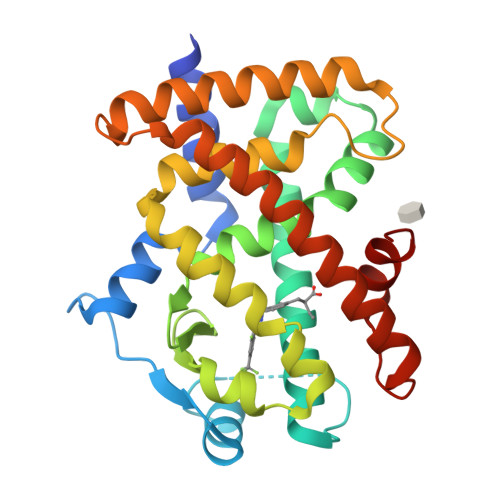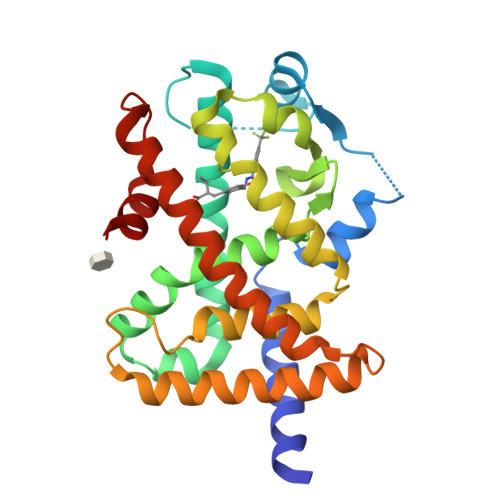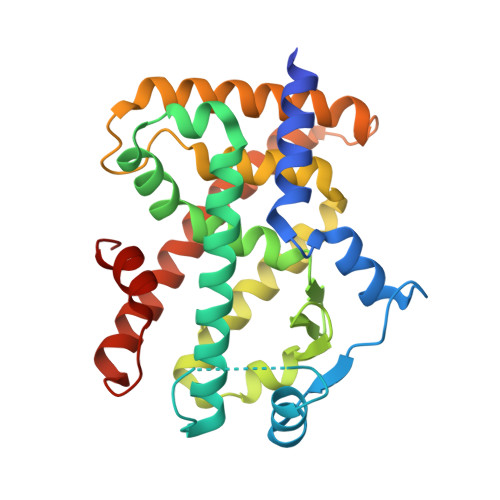Adaptability and selectivity of human peroxisome proliferator-activated receptor (PPAR) pan agonists revealed from crystal structures
Oyama, T., Toyota, K., Waku, T., Hirakawa, Y., Nagasawa, N., Kasuga, J., Hashimoto, Y., Miyachi, H., Morikawa, K.(2009) Acta Crystallogr D Biol Crystallogr 65: 786-795
- PubMed: 19622862
- DOI: https://doi.org/10.1107/S0907444909015935
- Primary Citation of Related Structures:
2ZNN, 2ZNO, 2ZNP, 2ZNQ - PubMed Abstract:
Peroxisome proliferator-activated receptors (PPARs) belong to the nuclear hormone receptor family, which is defined as transcriptional factors that are activated by the binding of ligands to their ligand-binding domains (LBDs). Although the three PPAR subtypes display different tissue distribution patterns and distinct pharmacological profiles, they all are essentially related to fatty-acid and glucose metabolism. Since the PPARs share similar three-dimensional structures within the LBDs, synthetic ligands which simultaneously activate two or all of the PPARs could be potent candidates in terms of drugs for the treatment of abnormal metabolic homeostasis. The structures of several PPAR LBDs were determined in complex with synthetic ligands, derivatives of 3-(4-alkoxyphenyl)propanoic acid, which exhibit unique agonistic activities. The PPARalpha and PPARgamma LBDs were complexed with the same pan agonist, TIPP-703, which activates all three PPARs and their crystal structures were determined. The two LBD-ligand complex structures revealed how the pan agonist is adapted to the similar, but significantly different, ligand-binding pockets of the PPARs. The structures of the PPARdelta LBD in complex with an alpha/delta-selective ligand, TIPP-401, and with a related delta-specific ligand, TIPP-204, were also determined. The comparison between the two PPARdelta complexes revealed how each ligand exhibits either a ;dual selective' or ;single specific' binding mode.
Organizational Affiliation:
The Takara Bio Endowed Division, Department of Biomolecular Recognition, Institute for Protein Research, Osaka University, Open Laboratories of Advanced Bioscience and Biotechnology, Suita, Osaka 565-0874, Japan.








